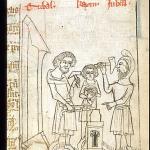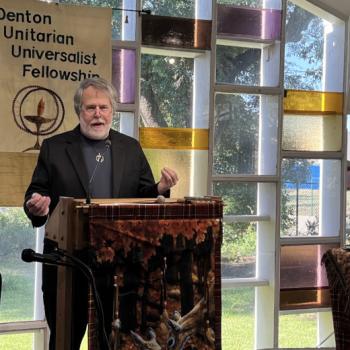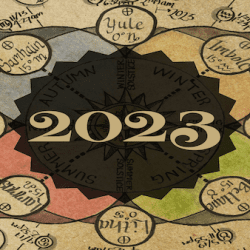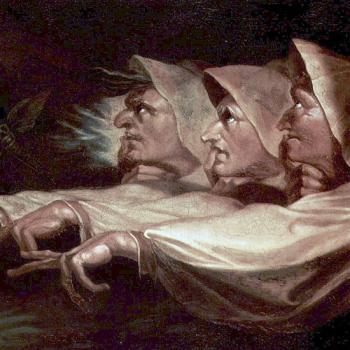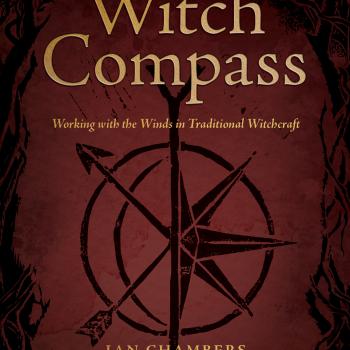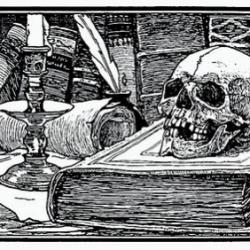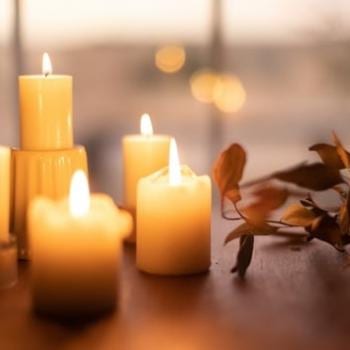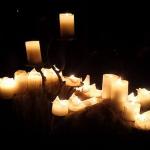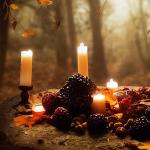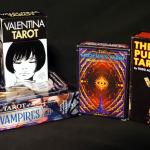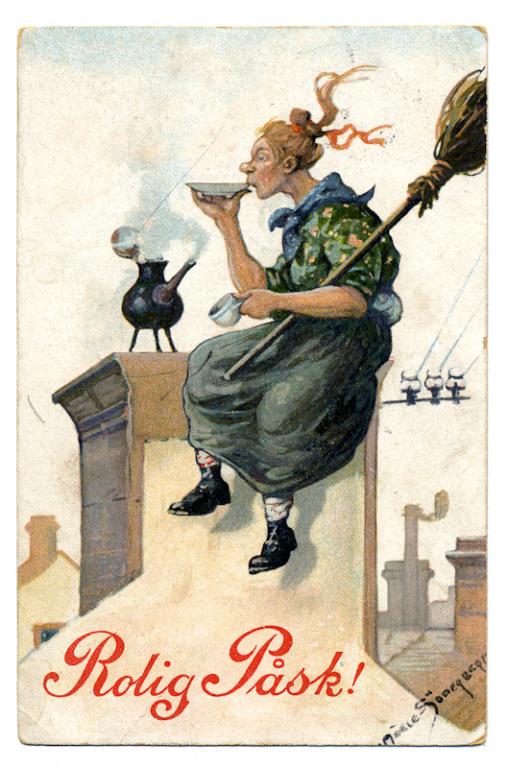
Has modern witchcraft forgotten the Witch?
Modern witchcraft is many things — ask a dozen witches and you’ll get two dozen definitions. It’s religion, it’s folk magic, it’s nature worship, it’s seasonal veneration, it’s pagan, it’s Christian, it’s healing, midwifery and rude medicine, it’s alchemy and astrology, it’s basic herbalism, poison mastery, diabolism, it’s goddess worship, it’s hedge-riding, it’s fairyland. Many an apologist has sought to sanitise, make palatable or explain the misunderstandings of witchcraft, where the green fingered old lady was castigated and the ancient itinerant conjuror chastised. We’ve historically mistaken, we’re told, they’re old rustic beliefs for rank heresy — an aged golden-chain that has woven its way through time and retaining a romanticised modern conception of homespun metaphysics. It’s the secular world, Christianity, or the world in which we live our daily lives, it is supposed, that is somehow wrong, out of kilter.
Around this modernised figure of witchery is summoned a multicoloured raiment of our desires, a dream coat that fashions itself anew to cater for whatever the dreamer wants it to represent, reflecting each and all of our needs and desires in the ethereal ribbons of a glamour.
And yet, in all this reclaiming, repackaging to suit modern dispensation, have we left the old, feared Witch behind? The hag that instills fear, who is positively outside of our world, an ‘othered’ being of opposition who stands in stark contrast to precisely everything that gives us succour, all that we perceive and that structures our existence. The Witch, in all cultures, never was intended to give comfort, ease dissatisfaction with our lot, justify our sojourn into nature, or a fantastical daydream of moonlit revelry. The Witch, wherever she occurs, strikes terror into the very heart of all who come under her gaze – she deprives families of sustenance, turns milk sour, stops butter churning, makes crops foul and fail on the stalk, rides mares to exhaustion, haunts dreams, disturbs everything, society and conventional culture at large, and individuals in particular. She may heal, but equally poison with agonisingly tortuous concoction. We’ve misunderstood, we tell ourselves, that “eye of newt, and toe of frog” are contrivances that are actually harmless herbs, mustard seed and buttercup — how twee and sweet the rag-adorned, crag-faced ancient one now appears, gently simmering a harmless herbal brew. The internet is rife with an abundant list of long-forgotten herbalist jargon that sounds nasty, but for some inexplicable reason was used to conceal mundane ingredients — not once is a primary source for this grossly oft-repeated information referenced, making it dubious at best and highly unlikely as no records seem to exist to support this flimsy hypothesis —dire consequences if you confuse hemlock for cow parsley. By contrast, we have good literary evidence for the witches of MacBeth being theatrical caricatures of chaos, disorder, transgressive morality and inversion — i.e. the early modern Witch. “Fair is foul and foul is fair.”
In sanitising the Witch, making the woods a safe retreat, free of threat and imminent danger, making our goat-footed devil a kindly, misunderstood, loveable brute, we have utterly dethroned Satan and replaced him with an idealised diminutive deity, defanged and declawed, reflecting back at us a face of acceptance. But Satan was never acceptance, the witch was ever the outsider, outcast, shunned and feared, turning society against itself and challenging cultural conditioning. The irony, then, when modern witches gather in their droves at large conferences, popular and growing safe-havens in wider society where collective difference blends and bleeds into perfect pop-goth similitude, everyone garbed in near identical style and symbols. In the conference hall, the gathering, the moot, where is the outsider, where is the challenger, the danger, the threat upon the threshold that rails against our romanticised fantasy of a rose-tinted past worldview? “We are the children of the witches you didn’t burn”, is emblazoned on t-shirts, ignorant of the fact that most of those tragically executed for witchcraft were victims of fear and hate, society reinforcing its identity by punishing nonconformity; often, though, that was due to economic reasons or misfortunes. If we all are content in our shared witchiness, now a popular trend and aesthetic reaching the mass media as a lifestyle choice, then where is the place for the actual Witch? What would most neopagan, modern Wiccans and witches do if the Witches of MacBeth appeared before them in terrifying, world-shattering, awful and glorious horror?
If this disturbs you, and you find yourself challenged by the ideas presented, then you have become aware, to some degree at least, of the Witch, lurking as she does at the perimeter to provocate, oppose, upturn, invert, transgress, reverse — not arbitrarily, but by design, single-mindedly bending all about that à la mode. This is her role and function as ‘other’. How many of us have ventured into those dark places, truly, that lurk in the murkiest recesses of our being, where only we know they dwell, buried under guilt, shame, fear, disgust? Do we ever dare take them out of their carefully constructed box and face them at our sabbat, instead of the joyous celebration of nature’s turning tide. How many of us use the dying of the sun to truly interrogate ourselves and locate the place of our own demise and the very real, unsettling oblivion that awaits — not just as a whimsical psychological exercise, but a genuine encounter with the Adversary. We’ve collectively made light of the Witch, Krampus, Satan, the devil — none of these important figures escape our gentrification, and making safe — society heeding the trend, repackaging and sending it back in a feedback loop as society does within TV shows, cultural references, pencil cases, pin badges, kitsch accessories and pentagrams aplenty. Indeed, these archetypes have become important reference points in self identity, symbols we adorn ourselves with to present to the world that we are a bit more edgy than we believe is the majority. We celebrate the progress of Wicca from a murky cult to a worldwide religion of nature worship, (perfect) love and (perfect) trust. In this social acceptance, then, where lies the Witch, looking in ready to reverse and subvert? If we are all the same under a single banner, then who stands on the outside, ‘othered’?
A recent podcast series from the BBC, called Witch, explored the modern phenomenon, charting the reclamation and empowering nature of witchcraft in modern peoples’ lives. It presents as a wholesome, modern investigation finally made suitable now for BBC Radio Four listeners. It is persuasive and almost convinces that witchcraft is a positive force, reinforcing how we’d like to see ourselves, a belief that will make us feel at ease in a world increasingly confusing, while making the average Radio Four listener feel at home with the guests, a nice slice of Victoria sponge and an herbal tea. This is the popular notion, no longer mired by the horror of the night-raider, the shapeshifter, the demon of the Sabbat. This is a place of happy community, acceptance, tea, wine, giggles and handicrafts and, only occasionally, civil rebelliousness. This is polite, respectful, conservative, modern British living-room witchcraft that sips calming chamomile, a little belladonna hanging nearby for a vague whiff of risk and, most of all, ‘tradition’ (it’s part of the archetypal regalia after all).
Modern witchcraft is likely a hop and a skip from agreeing a doctrinal body, and an informal orthodoxy — this loosely exists already as courteous agreement (and internet rage) — but a few more decades and conferences will decide it for certain. Christianity took a couple of hundred years to iron itself out!
Religions have gone through this process before and it’s surely possible that, in a few hundred years, witchcraft will be the popular, official religion of the West and, as most modern witches hold negative views of Christianity, the church will be on the outside looking in, demonised — never mind that ‘cakes and ale’, or the ‘housel’ is in reality the Eucharist. History has already made plain that the Christian mass was adapted in a syncretic motion from pre-existing cults and religions, reclaimed in most recent times from that hoary past by modern Wiccans and neopagans who proclaim “they stole it from us” as though we share anything like what it is to be an Iron Age citizen. This process is a wheel, turning about and around, up becomes down and vice versa. Who was once God becomes tomorrow’s Devil, and will again be somebody’s God one day, after a facelift and new set of moralities.
And in every culture in every time, the Witch hovers at the threshold, a threatening presence to consensus society, cultural conditioning, a danger to our previous tightly held worldview who mustn’t be allowed in. Ever!
Caveat: This is offered here as an opinion piece, not a fixed view but a thought stream, an open question, intended as conversational.
If you have got this far and don’t hate me, follow me for latest updates, essays, book news, articles and such like over at Surrey Cunning.
Addendum
11th July, 2023
This post gained some small traction on social media since it was published. This got seen and appreciated by John Beckett who wrote an original piece and things took on a life of their own after that. Jason Miller wrote a rebuttal of John’s article, whilst BJ Swain took a more measured approach in his considered and well presented piece, and things escalated as social media does. Inevitably, this descended into a bit of a pissing contest in terms of how we define the Witch.
This all took a direction that I hadn’t intended when I wrote Remembering the Witch. The pissing contest that ensued, where everybody else felt compelled to burden the world with their subjective definition of the Witch, a nebulous figure as I have often said (“… a moving target…” I believe I wrote) put me off any further engagement. I feel it necessary to repeat here: If we think we can point and say ‘this is the Witch’, then we have made a very grave mistake!
When I penned this post, I was generally asking a question about where the place is now for the ‘wicked witch of the dark woods‘ (for want of a better analogy), and in answer proposing that there is currency in the antagonist as force for change and evolution, even initiation, as one who shifts perception around them, changing reality and presenting new horizons, but also, crucially, danger. I was envisaging Granny Weatherwax, and Austin Spare’s Mrs Patterson, when I wrote it (as some astute readers deduced). I hold that this is an important role in how we engage such mysteries, if we engage them at all.
This article was mostly about antinomianism, its function and utility in Traditional Witchcraft, and I wrote it in an antinomian way – provocative, heretical. However, in doing so, identities were threatened. When our identity, so carefully crafted and tightly held onto, feels challenged it reacts aggressively. Yet, it pays to be mindful of the multiple identities that we each hold in our daily lives. For the many-masked god, these are kindling. And the Witch cackles on…


